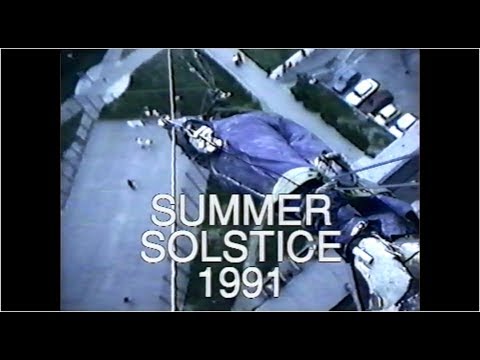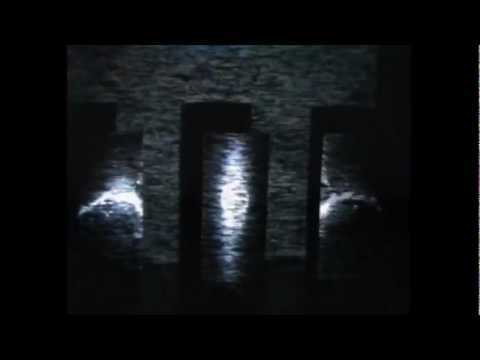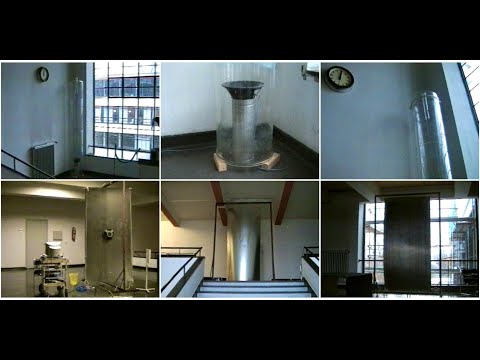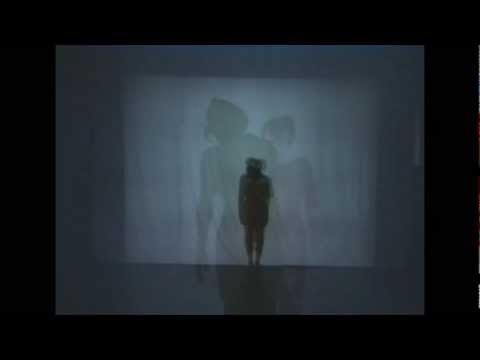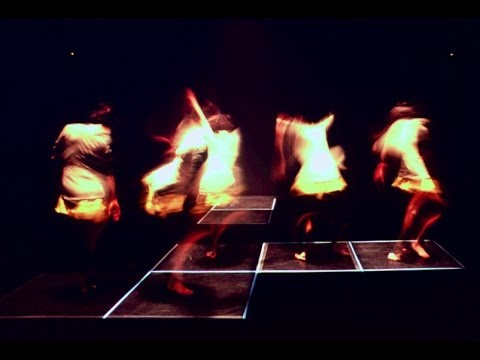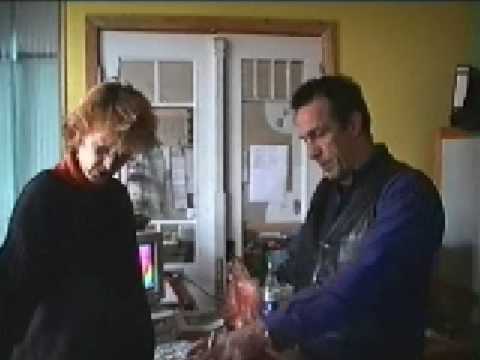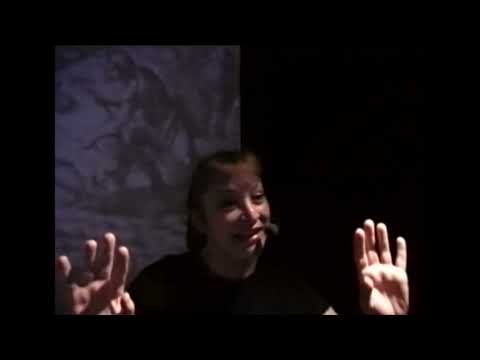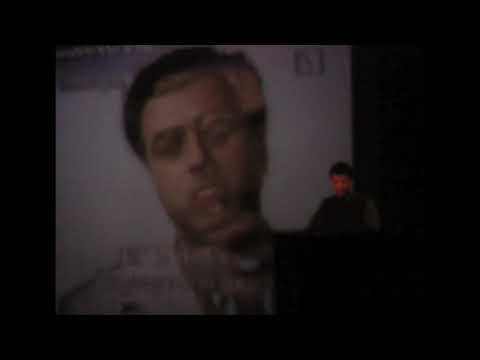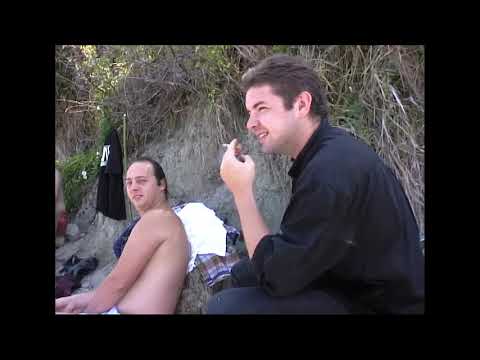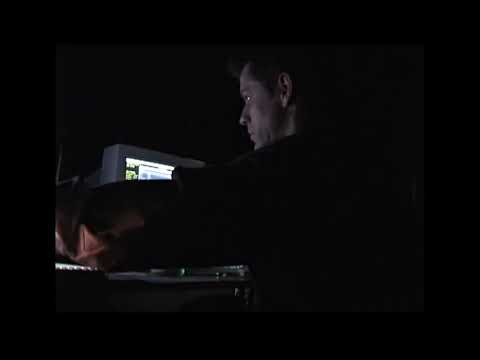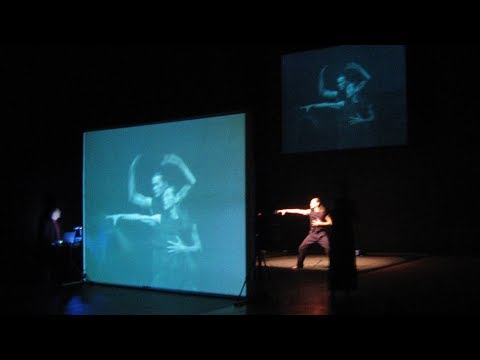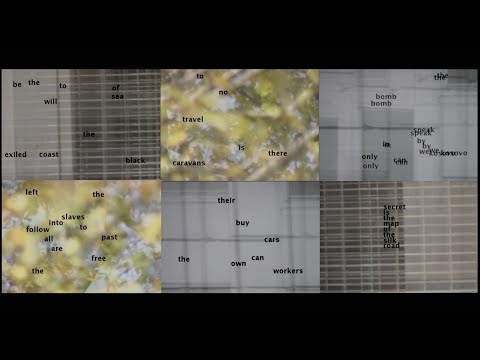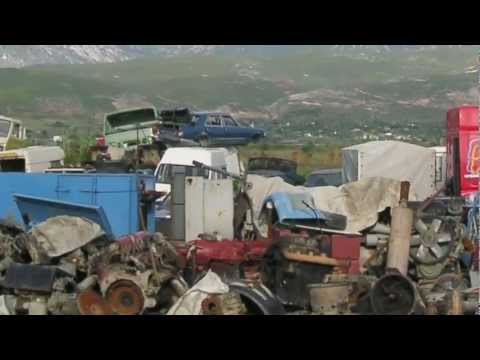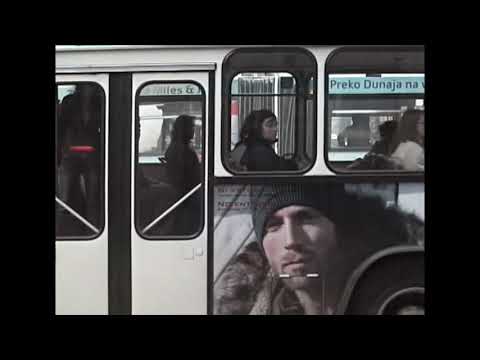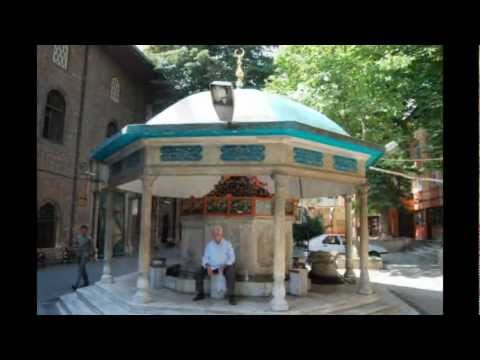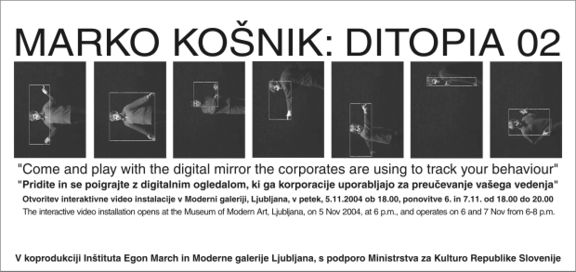Egon March Institute
-
to
20 Aug 2021
22 Aug 2021
CroatiaNovigradVeliki trgArterija International Festival of Visual ArtsDitopia Memotopia, video remix 2021 by Marko Košnik, Egon March Institute
-
to
6 Sep 2019
8 Sep 2019
AustriaLinzSTWST ClubSTWST48X5 Stay Unfinished sessions, with an artist Marko Košnik (Egon March Institute) and a landscape architect and urbanist Urška Škerl participating
-
to
1 Jun 2018
30 Jul 2018
EstoniaMoosteMoKSMarko Košnik (Egon March Institute) residency programme Open Studio
-
14 Dec 2012
PhilippinesManilaTerminal GardenFete dela WSKA lecture by Marko Košnik, Egon March Institute at the Insular Languidity event presented by Fete dela WSK, Greenpapaya Arts Project, 98B Arts Collaboratory, and Subflex
-
4 Jun 2011
AustriaViennaVerein für Raum und Form in der bildenden Kunst, Ve-schPerformance Symposium on the Past, Present and Future of the Fluxus-Movement, Is Fluxus Dead? Intermedia Rules! From Networked Performance Events to VanGoghTV, Coded Cultures and Art-on-Strike, a lecture by Marko Košnik (Egon March Institute) Globalism Rules! Immaterial Art Practises behind the Iron Curtain, a part of the EU funded project X-OP- eXchange of art operators and producers led by KIBLA Multimedia Centre
-
to
9 Nov 2010
13 Nov 2010
FinlandHelsinkiTaidekoulu MAA UniversityX-OP - eXchange of art operators and producers, including Egon March Institute project Operabil Helsinki - (Electropera Act 5), in the scope of EU funded project led by KIBLA Multimedia Centre
-
to
1 Jul 2010
30 Aug 2010
EstoniaMoosteMoKSA polymedia artist Marko Košnik, Egon March Institute, a residency programme
-
to
13 May 2010
15 May 2010
EstoniaMoosteAvamaa International Symposium of Art and IdeasX-OP meeting and events, EU funded project X-OP - eXchange of art operators and producers led by KIBLA Multimedia Centre, collaborative performance Operabil Hexpo - (Electropera Act 4) by Marko Košnik, Egon March Institute
-
to
30 Apr 2010
7 May 2010
PortugalAbrantes, TomarX-OP: Festival Time and Technique produced by KIBLA Multimedia Centre, ELECTROPERA performance lecture with live topographic imagery by Marko Košnik, Egon March Institute, curatorial dinner by Petra Kapš, a lecture Dictionary of Subsidized Art - Here and Now by Aleksandra Kostić, DVD screenings by Peter Tomaž Dobrila, an exhibition and lecture Drawing by artists Polona Maher and Petra Varl, EU funded project X-OP- eXchange of art operators and producers
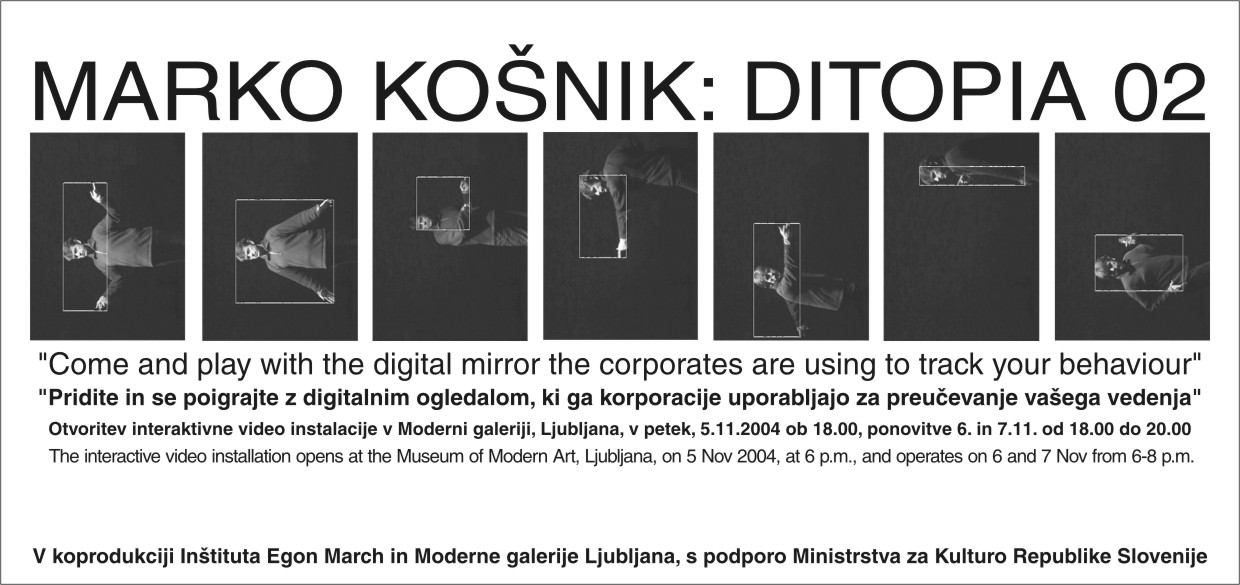 Ditopia 02, Moderna galerija, 2004
Ditopia 02, Moderna galerija, 2004
Background
During the 1980s, Marko Košnik collaborated with several artists (Vinko Tušek, Marko Kovačič, Andrej Šušteršič - Sar, Zoran Smiljanič, Irena Rajh, Polona Sosič, Andrej Pibernik, Max Osole) and alternative groups (Junajtit Adis, Laibach, Cavis Negra, Most, PTL). In fact the name of the institute first appeared in the context of the group Most (Bridge) which consisted of Bojan Štokelj, Etbin Stefančič, Marko Košnik, March Davorin, Edi Marinček, and others, when in 1986 Marko Košnik announced EMI as a long-term care for concepts, theoretical texts and documentation of the projects produced as collective efforts in unstable conditions, with projects and groups not long lasting.
Collaborations and projects in the 90s
EMI's first larger production was Bellum Contra Solem, a spectacle in the urban environment, for the celebration of summer solstice 1991 in Nova Gorica, conceived with Marko Kovačič and Bojan Štokelj, performed by Mojca Dimec, Sebastijan Starič, Katja Kacin, Marko Kovačič, with collaboration of Črtomir Nanut, Mojca Pungerčar, Simon Bizjak, Silvo Zupančič, Andrej Trobentar, Metka Megušar Bizjan, Irena Tozon Mrhar, Branko Erjavec, Anita Lopojda, Miran Ipavec, Pavel Okorn, Aleks Vičič, Rado Filipčič, Borut Cajnko, Samo Oblokar, Renato Strgulc, and Miroslav Hadžič–Leča - under the group name “Fusnet Association”. The same year a video documentary of the project, produced by Andrej Kregar was premiered on Slovene national TV.
In 1991 Stvar – Das Ding – The Thing, a scenic performance with sonorostatic plates (Marko Košnik in collaboration with Etbin Stefančič, Andrej Trobentar, Smiljan Šiška, Silvo Župančič, and Špela Virant) was presented in Hfbk Hamburg and Cankarjev dom in Ljubljana, following the same concept by Membrane, a sonorostatic performance for the opening of the Ostrannenie Festival at Bauhaus Dessau in 1993 (Marko Košnik, Silvo Zupančič, Borut Savski, and Špela Virant).
In 1992 EMI produced and coordinated Piazzeta Ljubljana within the Van Gogh TV Piazza Virtuale - 100 days of interactive tv for documenta IX in Kassel. Live programme was broadcasted from Kassel by satellite TV network 3SAT, transmitted in Slovenia by Kanal A local television. Performers Ema Kugler, Mojca Dimec, Mojca Kumerdej, Lidija Bernik, Franc Purg, Sebastjan Starič, Bojan Štokelj, Marko Kovačič, Silvo Zupančič, and Marko Košnik were joining via videophone from performance venue of KUD France Prešeren - in synchronisation with guests phoning in their statements via Radio Študent (RŠ) syncast: Jelena Lovrič, Silva Mežnarič, Rade Šerbedžija, Slavoj Žižek, Damjan Bojadžiev, Gorazd Suhadolnik, Radko Polič, Goran Jankovič, Haris Burina, Rastko Močnik, Petar Luković (joining from Belgrade). Contact studio, radio and modem links were conducted by Borut Savski, Miran Divjak, Peter Levart, Miran Kajin and Snežana Levstik, with Jure Longyka as the main announcer. “What do intellectuals have to say about the war in Yugoslavia which is not communicated by the official media?” was the main topic of Piazzeta Ljubljana.
Figure in Space, Man in the Case was a three day author-active installation in ŠKUC Gallery in 1993, with Marko Košnik living closed-hidden in a wooden box to control sound and video surveillance system in order to capture movements of the visitors, who had to find live video screening from security cameras on a travel through the gallery rooms kept in total darkness. Site specific acoustic sculptures were built with Silvo Zupančič.
Cukrarna [Sugar Factory] was a dance performance with synchronous video and electroacoustic music (Marko Košnik in collaboration with choreographer and dancer Mateja Bučar, dramaturg Špela Virant and Borut Savski in the role of sound technician) premiered as an opening performance of the Mediennbienale Leipzig in 1994. In Slovenia performance was premiered in Cankarjev dom Linhart Hall and repeated in Kapelica Gallery in 1995.
A.B.sence, a dance performance in an interactive environment (movement in relation to lights, video and algorithmic computer music) by Marko Košnik, Mateja Bučar, Nebojša Ivanovič, and Katarina Pejovič was premièred in Cankarjev dom in 1996 and presented at New Moves 1997 in Glasgow in the form of an interactive installation by Marko Košnik, Katarina Pejovič, and Pavel Okorn.
PARA Trilogy
1. Parahouse, a communication project with real-time digital processing of video transmissions at Ostranenie Festival in Dessau in 1997. Participating artists and institutions were Gerard Couty, Christian Groupner, Olivier Schulbaum, Alma Niett, Monika Glahn, Jacques Bigot, Christian Vanderborght, Antoin Vie, Vadim Fiškin, Borut Savski, Tom Demeyer, Jef Kalil, Heiko Koch, Francis, Katarina Pejović, Marko Košnik, Club Automatic, STEIM, KIEZ Cultural Centre, produced by Egon March Institute and Bauhaus Dessau Foundation. Actors equipped public rooms of KIEZ cultural center with 20 miniature observation cameras and several sensor systems, to collect audience behavioral data for live re-interpretation in three control centers and display it back in theatre, bar, staircase, chilling room and as projection on the main facade. General live video and sound mix output was streamed online during 3 days of ongoing program.
2. Paparapapa, a series of performances and a communication project by Marko Košnik, living and acting for 5 days and nights inside Kapelica Gallery in Ljubljana; with Margrit Rieben - electronic music, performance, Mike Hentz - online web-streaming appearance from Frankfurt, Christian Vanderborght - online web streaming appearance from Paris, Martin Schiters - networking, Miško Šuvaković - appearance in synchronised broadcast of Radio B92 - Belgrade and Radio Študent - Ljubljana. Bojan Merc provided a server for enhanced internet activities, Jurij Krpan - organisation, technical support.
3. PA-RA, a theatre piece for 6 performers (with Damjana Černe, Mateja Bučar, Dragana Cukovac, Margit Rieben, Dirk Bruinsma, and Marko Košnik) was premièred at Cankarjev dom in 1998 with four additional shows.
Hanibal is crossing the Alps was an opening performance for the International Congress of Aestetics, Ljubljana, Cankarjev dom: Marko Košnik - solo speech to live video-tv resampling (1998)
1to3, Knotten Festival, Bern - dance, improvised live video and music performance: Sumi Masayuki - dance, choreography, Marko Košnik - live video, Margrit Riebben - drums, electronics and small instruments, production, Hans Burgener - violin with dsp (produced by Margrit Rieben) (1999)
hEXPO Festival
In 2000, after a year and a half of negotiations and preparations, Egon March Institute organised hEXPO – International Festival of Self Organising Cultural Forms, a synchronised action carried out by 15 co-producers with over 70 international guests. The 3-week festival took place in Maribor (KIBLA Multimedia Centre, Pekarna Magdalena Network, Mariborski radio Študent (MARŠ)); Ljubljana (Metelkova, KUD France Prešeren Arts and Culture Association, Kapelica Gallery, Ljudmila, Slovenian Cinematheque, Radio Študent); and Koper (MKC Koper Youth and Culture Centre, PINA Primorje Information Atelier). The festival was conceived and coordinated by Marko Košnik, Katarina Pejović, Meta Štular, Monika Glahn, Urška Jurman, John Grzinich, and Sabina Salamon. International guests gathered in three teams, working in parallel in the three towns and changed the locations on a weekly basis with the aim to to create synergies and cross-collaboration among the above listed NGOs. An impressive number of events (performances, lectures, concerts, workshops …) were produced and covered live via Internet transmissions and radio broadcasts. Hexpo festival introduced a prototype for Slovene digital cultural platform.
Projects after 2000
In 2000 Egon March Institute produced two original cinematic musical performances displayed within Kino Uho programme of Slovenian Cinematheque: Five synesthesias for sound and moving images - a solo video & sound performance by Marko Košnik, and Desktop Cinema, a music performance with live video instrument by Margrit Rieben, Dirk Bruinsma, and Marko Košnik, originally co-produced with Kino Reitschule Bern and premiered there, staged later on as well at Pekarna Magdalena Network in Maribor.
TheoThea - a chamber opera for theoretical narration, music, live video and computer graphic at SKC Beograd, for the international symposium "Theater in Theory" (co-produced with CENPI, Belgrade) with: Miško Šuvaković - theoretical narration, Ulrike Gabriel - computer graphic programming and live performance, Margrit Riebben - drums, electronic, small instruments, Dirk Bruisnma - soprano sax, electronics, Marko Košnik - live manipulation of digital imagery, Andreas Findeisen - philosophical frame, Monika Glahn - internet workshop (2001)
In 2002 the Jaap Blonk, Dirk Bruinsma, and Marko Košnik trio performed at Overtoom 301 (joint production with OT301) in Amsterdam, followed by a Dutch Tour (Rotterdam, Den Haag, Nijmegen, Tilburg, produced by Jaap Blonk in 2003) and a performance at Roaratorio Festival in Geneva (produced by Dirk Bruinsma in 2004).
The PARAMAYA project took place in Mexico in 2003.
Operabils and Ditopias
In the years 2004–2008 Egon March Institute produced a series of Operabils and Ditopias in co-productions with several venues and organisers, featuring Marko Košnik performing / exhibiting solo or with collaborating artists. “Operabil” is a module of media opera with in situ collected topographical imagery and processually developing libretto. “Ditopia” is a form of in situ interactive installation developed as gestural video instrument for active use from the side of visitors.
Ditopia 05 at the Station Mir in Herouville Saint Clair, Ditopia 02 at Museum of Contemporary Art Metelkova (MSUM) (2004), Operabil Vienna for Serious Pop Lab 2 at Konzerthaus in Vienna, Operabil Shqiptare for Tirana Biennale 3, The dark bathysphere of captain Picard - at Resfest / Equaleyes in Vienna - (2005).
In 2006 EMI and Sumish dance camp developed and co-produced Japanese version of Operabil Kobe, premiered in Xebec Hall in Kobe (Sumi Masayuki, Yasuhiro Otani, Tomahiro Tanaka, Marko Kosnik). European version was co-produced and presented at KIBLA Multimedia Centre and Kubus Hall / Tesla - Berlin (Sumi Masayuki, Barbara Thun, Marko Košnik).
Operabil The missing engine of Laputa was performance lecture at Documenta Urbana 2006 in Kassel, Ditopia Bathyscaph Trieste (Batiskaf Trst) at Mala Galerija in Ljubljana was an installation the artist was living in during preparation and exhibition period, exposing the documents in the same wooden case he inhabited during Figure in space, man in the case installation 14 years earlier, this time capturing events outside the gallery with even more sophisticated surveillance system. This was the first artist controlled public video surveillance system was introduced in Ljubljana. Monika Glahn and Claudia Westerman were invited to co-inhabit the gallery during the days of exhibition (2007).
Barbara Thun, musician and composer, was singing in Operabil POW, co-produced with PSWAR in Amsterdam, while in Operabil POW Istanbul, co-produced with Apartment project, Košnik was again acting on his own, supporting libretto declamation with enhanced topographic imagery. Walk-laps animation from the streets of Vienna accompanied storytelling in Operabil Mousy - co-produced by Transformingfreedom and performed in MQ Vienna, where the exhibition Operabil: The Early Documents was opened as well later on, this time in MQ AiR base gallery.
The same year, 2007, Košnik introduced Ditopia Novigrad at Mediascape Festival in Novigrad, Croatia - an aleatoric travel through the streets and coastlines of the old town, calculated, zoomed and speed varied by chance algorithms, finishing the season with The exercise for the end of the world, performed in Ljubljana by Petja Grafenauer, Mojca Puncer, Petra Kapš and Jaka Železnikar, and re-conceived for the exhibition in Labin City Gallery, Croatia, in co-production with SCCA Ljubljana, curated by Petra Kapš.
2008 had seen Ditopia Memotopia, another version of walk laps in Novigrad. The same imagery was played with video instrument in Operabil Memotopia performances by Barbara Thun and Marko Košnik at Festival of new music in Brno, T.U.B.E. Klang Galeria in Muenich, and KIBLA Multimedia Centre, all co-produced by organizers at the venues. Stephen Kovats had joined to perform Operabil Conspirare during opening ceremony of Transmediale 2008 in the hall of Haus der Kulturen der Welt in Berlin.
Recent projects
Electropera
Electropera, a travelling festival was a 3-year project (2009–2011) of Egon March Institute in the context of X-OP network, a European platform for artistic creation supported by the Culture Programme of the European Union. A joint venture by 10 european partners was led by Maribor’s KIBLA Multimedia Centre. Egon March Institute invited selected artists to join touring with performances, concerts, installations, screenings, symposiums and workshops at the locations and events, co-produced by partners:
Act 1: Parahouse 12 – "How are we functioning twelve years later?" reunited artists that participated at the Parahouse project in 1997. Together with the new guests, 20 artists participated with performances, installations, and presentation that took place in the historic skyscraper Ullsteinhaus, Berlin in January 2009: Sorry, out of ideas – installation by Mateja Bučar, Vadim Fiškin (DUM Association of Artists); Cat Notation – presentation and performance by Joulia Strauss and Martin Carlé; Operabil Para Berlin – performance by Barbara Thun, Dirk Bruinsma, Marko Košnik (Egon March Institute); Filletville – performance and installation by Hilary Koob-Sassen (The Errorists); The Other Senses – installation by John Grzinich and friends (MoKS); Kudum – installation by Eku and friends; Verwandern – installation by Monika Glahn; Matrix of projected joint bad conscience – installation prototype by Christian Graupner (Humatic); Octopussy – installation by Borut Savski (Trivia Art Association); Para Re-flex Room – performance by Katarina Pejović (Shadow Casters); Digital Cousine – performance and installation by Jacques Bigot, Gerard Couty, Michel Piet, Christian Vanderborght, Rotraut Pape (Club Automatic – Universcity TV); and Afterhours Dance Party by Bads Label: Celebrating the album The Otherz!.
Act 2: Operabil Para Istanbul, (November 2009 by Marko Košnik - manipulation of digital imagery & Dirk Bruinsma - multi instrumental setup / based on cca 12.000 photos in a walking animation trough 14 kilometers of streets and locations in Istanbul
Act 3: Operabil Tomar - performing an instrument for topographic imagery of Abrantes, with Dirk Bruinsma, sax and electronics, and co-production of the works: Dirk Bruinsma - concert / Mia Makela - performance, lecture / Monika Glahn - lecture, co-produced for Time and Technique festival, Politecnico de Tomar - Abrantes
Act 4: Operabil Hexpo - in situ production of a chamber performance with Laura Vieira, Monika Glahn, Michael Saup, Andreas Findeisen, Marko Košnik, co-produced for Avamaa festival by MOKS, Mooste, Estonia
Act 5: Operabil Helsinki - performing an instrument for topographic imagery from X-OP partners meetings with 10 voices choir of invited guests, and co-production of the works: M + M - Rodney Place and Leila Anderson - performance, Alexander Nikolic - performance lecture) X-op platform, with Taidekoulu Maa, Helsinki
Act 6: Operabil Transcode - co-production of performances by Margrit Rieben and Jaap Blonk, lecture by Michael Saup, X-op events in Anatomietheater, Transformingfreedom, Vienna
Act 7: Coding the Society took place in June 2011 and was co-produced with K6/4 Institute (Kapelica Gallery, Cyberpipe, Cafe Metropol, and Klub K4) in Ljubljana.Many world renowned lecturers and artists from across the globe participated: Ben Patterson (US) – a pioneer of instruction art and co-founder of Fluxus movement; Tom Fuersnter (AT) – a former professor at Angewandte Kunst in Vienna and ZKM in Karlsruhe, blockchain expert; Michael Saup (DE) – a renowned media artist and professor, starting his career at Frankfurt Media Lab; and Andreas Findeisen, long time assistant of Dr. Peter Sloterdiyk while in a position (AT/DE), all presenting radical research areas in contemporary art. Irene Agrivine Widyaningrum (ID), Ferial Affif (ID) and Serra Ozhan Yueksel (TR) presented the development of artistic models in eastern Indonesia and Turkey. Stephen Kovats (CA) – the establisher of Electronic Media Interpretation Studio and Ostranenie festival at Bauhaus-Dessau, the ex-director of Transmediale, and a co-funder of rOg_agency, presented an early manifest of Marshall McLuhan.
The symposium was simultaneously upgraded with a sound system and a video projection of the happening in Cyberpipe in the Cafe Metropol which encouraged parallel dialogues, monitoring and comments. The video platform for live processing of text and graphic material was developed and managed by Boštjan Čadež, Maja Smrekar, and Luka Prinčič in collaboration with Tom Fuersnter and Marko Košnik in co-production with Kapelica Gallery.
Performances and stage events were held in Klub K4 featuring Ben Patterson’s Cloning Society – Recent Developments; Evelyn Muursepp and John Grzinich's The Symposium as Organism; Jaap Blonk’s Dr. Voxoid’s Next Move, the latter raising the question of the future of art using audio visual instruments.
The performance-symposium presented the latest developments in economics, politics, technology, culture, and art and marked the 25th anniversary of the Egon March Institute. That year the first publication that documents the work and production of EMI was published.
Zborogled
In November 2015 Egon March Institute staged an interactive visual installation and two public assemblies at Kino Šiška Centre for Urban Culture. Zborogled (Group/Choir Watch) was an interactive demonstration of artistic use of security cameras for public screenings in Kino Šiška, testing the possible updates to the law on protection of private property, which could enable a public watch of security systems for surveillance of public spaces. Invited experts with various backgrounds discussed the possibility of open access to the intellectual property created in Slovenia.
See also
External links
Archives
- Egon March Institute projects: video archive on YouTube
- Marko Košnik on the Videodokument (Videoart in Slovenia 1969-98) website
Catalogues, e-books
Projects
- Marko Košnik's project in KIBLA 2009 on the ACE KIBLA website
- STAL project by Egon March Institute and Radio Student
Music scores
References
- About Piazzetta Ljubljana with videoclip and an interview, 1992
- Marko Košnik in Tesla Berlin, 2006 (in German)
- Marko Košnik at Transmediale 2008
- Marko Košnik on Future Fluxus website
- Strictly Berlin 2007 presentation on Vimeo, incl. Marko Košnik
- Marko Košnik at MoKS, Estonia
- Egon March and Ministry of Experiment on Radio Študent's R A D A R for the 25th anniversary of Egon March Institute



